DISCLOSURE: VT condemns the horrific tragedy committed by the NAZI Party against Jewish Citizens of Europe during Word War II known as the "Holocaust". VT condemns all racism, bigotry, hate speech, and violence. However, we are an open source uncensored journal and support the right of independent writers and commentors to express their voices; even if those voices are not mainstream as long as they do NOT openly call for violence. Please report any violations of comment policy to us immediately. Strong reader discretion is advised.
Warning: This article covers criticism of the Israeli government. VT does NOT support hate speech, violence, racism, and/or bigotry. However, VT is an open source media thus it protects the right of independent writers to voice their points of view.
 In order to shed light on the genocidal assaults currently facing the inmates of the Gaza open-air prison, brief case studies highlight pivotal Freedom Struggles in the era of the French Revolution.
In order to shed light on the genocidal assaults currently facing the inmates of the Gaza open-air prison, brief case studies highlight pivotal Freedom Struggles in the era of the French Revolution.
The quests of Black Slaves for self-emancipation and of Indigenous peoples to defend themselves against US Expansion call attention to the decisive military and diplomatic strategies of Toussaint L’Overture and Tecumseh.
The careers of these two martyred Freedom Fighters help clarify the geopolitical contingencies facing the betrayed Palestinian people including Khaled Meshal, the political leader of Hamas currently residing in Qatar. With their deafening complicity of silence and their unwillingness to criticize forthrightly the Israeli government led by Benjamin Netanyahu, most Western governments are implicitly sanctioning the criminal slaughter of the caged and dehumanized Palestinians.
There is much complicity in high places with this current round of genocidal targeting some of the survivors of round after round of ethnic cleansing to clear the way for the establishment and expansion of the Jewish state.
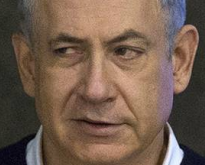 As the essay shows, Netanyahu brought forward the basic narrative of the Global War on Terror more than two decades before the events of 9/11. The author argues that the Israeli government and its elaborate network of media mouthpieces are currently advancing a false interpretation of “the West,” one that misrepresents history and fails to do justice to the importance in Western civilization of Freedom Fighters like Toussaint and Tecumseh.
As the essay shows, Netanyahu brought forward the basic narrative of the Global War on Terror more than two decades before the events of 9/11. The author argues that the Israeli government and its elaborate network of media mouthpieces are currently advancing a false interpretation of “the West,” one that misrepresents history and fails to do justice to the importance in Western civilization of Freedom Fighters like Toussaint and Tecumseh.
The Gaza Debacle demonstrates that even today the world’s dominant power centers remain very far from embracing the ideals of Universal Human Rights promoted by Toussaint L’Overture and by Tecumseh. The military wing of Tecumseh’s Indian Confederacy is largely responsible for defending Canada from annexation by the United States in the War of 1812.
Tecumseh, therefore, is a founder of Canada whereas Toussaint helped transform a slave revolt into a decolonization struggle of comparable importance in the annuls Western civilization to the historic quest of the Palestinian people, Christian, Muslim, and secular, to join the community of nations.
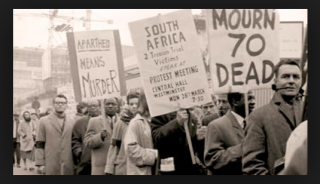 PART ONE
PART ONE
From the Sharpeville Massacre of 1960 to the Gaza Massacre of 2014
The gruesome spectacle of the Israeli air and ground invasion of the Gazan concentration camp displays in a visceral way some of the new twists and old features of a very old heritage of colonial assault on Indigenous peoples. Heavily blockaded for seven years, the Gaza enclave encloses 1.8 million people within a tiny 139-square-mile area.
The Israeli Defense Forces’ ground attack on July 20, 2014, on Shejaia, a Palestinian community within the walled Gaza detention facility, marked the beginning of a new phase in the Israeli quest to demilitarize Gaza altogether and to make the conditions of life unbearable for Gaza’s inmates.
The desire of the Israeli government to eliminate indiscriminately Palestinian children, women, and men became clear with the magnitude of attacks on their homes, schools, and hospitals. With the death toll approaching 2 thousand in early August, the Israeli government’s targeting of power, water, and sewage facilities in Gaza foretell of deliberately-inflicted plagues of hunger, disease, and malnutrition to come. Thus the death toll will inevitably be far beyond the current toll.
The attack on Shejaia invokes memories of the Amritsar massacre of civilians in 1919. This slaughter of civilians in Punjab India marked the beginning of the end for the British Raj in the British Empire’s so-called jewel in the Crown.
The Shejaia Massacre also displayed some even-more-telling parallels with the Sharpeville massacre of 1960. The Sharpeville massacre came in response to Black people’s protest against passing laws further restricting the free movement of the oppressed majority in the South African apartheid state. The massacre by South African police of 70 civilians at Sharpeville, slightly less than the number of civilians murdered at Shejaia, marked the beginning of the end of the White minority regime in its most notorious hive.
Like Blacks in South Africa, Palestinians living under the control of the Israeli state in Gaza or in the so-called Occupied Territories on the West Bank of the Jordan River live like an enslaved population. They are captive subjects of the Israeli government that denies them the exercise of basic human rights let alone the rights and responsibilities of both national and international citizenship.
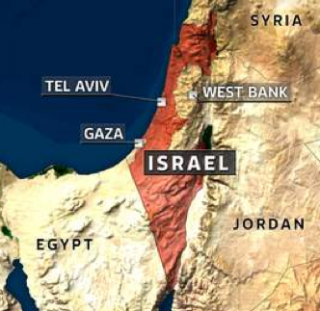 Citing apparently victimless “rocket attacks” on its territory, the Israeli government defined its actions as those of “self-defense” because some of Palestine’s Indigenous peoples have refused to lay down their arms and submit meekly to their subjugation within walled confines of enforced misery and isolation. Those who resist their oppression have been defined generically by their jailers as “terrorists,” much as those who resisted earlier invasions of their Aboriginal lands or the enslavement of their peoples has been defined as savages, infidels, or lawless predatory bands opposed to “civilization.”
Citing apparently victimless “rocket attacks” on its territory, the Israeli government defined its actions as those of “self-defense” because some of Palestine’s Indigenous peoples have refused to lay down their arms and submit meekly to their subjugation within walled confines of enforced misery and isolation. Those who resist their oppression have been defined generically by their jailers as “terrorists,” much as those who resisted earlier invasions of their Aboriginal lands or the enslavement of their peoples has been defined as savages, infidels, or lawless predatory bands opposed to “civilization.”
The Al-Qassam Brigades, the armed wing of the Gazan inmates’ elected representative body, continue to resist robustly the invasion of the Palestinian, homes, schools, hospitals and defense installations. The Israeli government attempted to justify their illegal invasion by defining first Shejaia and then Gaza city itself as a “nest of terror.” In brutal encounters with the Armed Forces of the Israeli state, thirteen members of the Israeli Defense Force were killed in one day. While the Israeli name of its military campaign is “Protective Edge” for international consumption, within Israel the descriptive term in Hebrew translates as Operation Mighty Cliff, a reference to the abyss awaiting those on the receiving end of the invasion.
Terrorists or Freedom Fighters?
The exchange of accusations about who is doing what to who is at long last arousing significant debate about how the undefined term, “terrorism,” can be deployed to justify attacks by massively-armed governments on minimally-armed targeted populations. The current Gaza debacle presents a particularly stark example of the grotesque abuse of the language and law of “self-defense” in the name of anti-terrorism.
The Israeli assault on Gaza beginning in July of 2014 presents the spectacle of one of the most heavily armed countries in the world deploying lethal force against Israel’s own Palestinian victims of intergenerational dispossession, repression, and genocide. The persistence of the Al-Qassam Brigades’ armed resistance to this onslaught points to the unresolved contention contained in the old cliche that one person’s terrorist is another person’s freedom fighter.
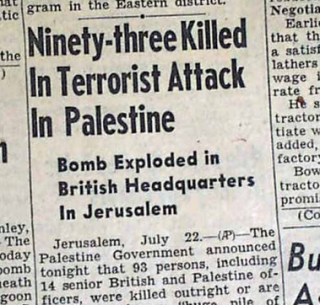 This dichotomy of viewpoints is amply illustrated by ongoing debates over the deployment of violence by Zionist fighters prior to the founding of the Jewish state in 1947-48. In 1946 Jerusalem’s King David Hotel was bombed by Irgun, an extremist wing of Jewish nationalism. One part of the King David Hotel was the administrative headquarters of the British imperial authority then mandated to govern Palestine.
This dichotomy of viewpoints is amply illustrated by ongoing debates over the deployment of violence by Zionist fighters prior to the founding of the Jewish state in 1947-48. In 1946 Jerusalem’s King David Hotel was bombed by Irgun, an extremist wing of Jewish nationalism. One part of the King David Hotel was the administrative headquarters of the British imperial authority then mandated to govern Palestine.
Initially, Haganah, the Jewish militia in Palestine, approved of the bombing. Haganah would become the Israeli Defense Force after the state of Israel was brought into existence in 1947-48 by the United Nations in UN Resolution 181. UN Resolution 181 also called for the creation in Palestine of an independent Arab state, a plan that to this day has gone unfulfilled.
Resulting in the deaths of 91 individuals, the bombing of the King David Hotel was a formative event in the history of violent attacks by non-state protagonists seeking to commandeer international media coverage of their cause. The bombing constitutes a textbook example of how a non-state organization could publicize its political agenda through a surprise act of violence whose resulting murders and mayhem were in large measure indiscriminate. Without a doubt, the lethal operation contributed to the removal of British obstructions to the creation of Israel as a sovereign nation-state. The episode, however, would have many unexpected implications as the Netanyahu government now combines the role of judge, jury, and hangman in indiscriminately defining as terrorism all actions of self-defense on the part of the beleaguered Palestinian people.
Originating in Eastern Europe in the late nineteenth century, the international Zionist movement had set itself the task of uniting international Jewry to back the task of creating the Jewish state of Israel. This goal required the displacement or elimination of the indigenous population to clear living space for further Jewish migration.
Initially, the Zionist leadership worked closely with the British imperial government. As a result, in 1917 the British superpower authorized the creation in Palestine of a “Jewish Homeland.” By 1946, however, the British government had fallen into disfavor with most Zionists because of the restrictions it was enforcing on further Jewish immigration into Palestine.

The Irgun extremists were advocates of creating a “Greater Israel” that would stretch all the way to the Euphrates River and the Persian Gulf. In 1973 Irgun was transformed into Likud, the right-wing Israeli political party. Benjamin Netanyahu, the current Prime Minister of Israel, is the leader of the Likud Party. As the dominant politician in the branch of the Zionist movement most known for directing lethal violence at civilians to achieve political goals, Netanyahu is especially conversant with the freedom fighter/terrorist dichotomy.
The Three Abrahamic Religions, the Propaganda of the Global War on Terror, and “the West”
Drawing on this background Netanyahu organized conferences resulting in the publication of his book in 1979, Terrorism: How the West Can Win. With this publication Netanyahu arguably invented the basic narrative of the Global War on Terror more than two decades before the events of 9/11, a monumental crime whose official cover story is demonstrably bogus. The events of 9/11 were concertedly spun to aid the Israeli government in transforming its regional enemies into the worldwide enemies of the entire “West.”
Part of the psychology of this semantic sleight of hand is to redefine “the West” as an outgrowth sprouting exclusively from the oldest two of the three Abrahamic monotheistic religions.
The propaganda of Netanyahu’s geopolitical creation, the Global War on Terror, continues unrelentingly in the characterization of Islam as a contaminating aberration within and adjacent to “the West.” The interpretation of “the West” as an exclusive outgrowth of the Judeo-Christian heritage misrepresents history in the interests of Israeli foreign policy. This propaganda twist, which draws on the academic interpretations of Bernard Lewis and Samuel Huntington, imposes blinkers to block out the importance of Islamic culture, philosophy, and religion in the genesis of Western civilization.
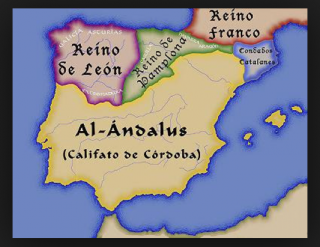 This civilizational complex, whose cultural trajectory from Mesopotamia to Egypt, Greece, Rome, Paris, Amsterdam, London, New York and Los Angeles, does indeed point westward. Western civilization was especially well nurtured by the cultural complex surrounding the Mediterranean Sea. Over long periods of time, the Mediterranean region was the site of complex interactions between populations attached to all three Abrahamic religions.
This civilizational complex, whose cultural trajectory from Mesopotamia to Egypt, Greece, Rome, Paris, Amsterdam, London, New York and Los Angeles, does indeed point westward. Western civilization was especially well nurtured by the cultural complex surrounding the Mediterranean Sea. Over long periods of time, the Mediterranean region was the site of complex interactions between populations attached to all three Abrahamic religions.
Part of this history unfolded on the soil of present-day Spain in the Islamic caliphate of Al-Andalus. In the Islamic caliphate of Al-Andalus Muslim, Christian and Jewish peoples lived together quite harmoniously. The interactions in Al-Andalus included important exchanges between scholars, philosophers, artists, technicians and scientists in ways that contributed substantially to the genesis of the European Renaissance.
“The West’s” need to replace the Cold War with another international paradigm of global conflict helped usher in the Global War on Terror. The enormous overt and covert budgets devoted to this crusade after 9/11 replenished public funding to feed the voracious appetites of “the West’s” enormous military-industrial complex.
The accelerated flow of public funding into what might be described as the privatized terror economy depends on the constant replication of the imagery of Islamic terrorism specifically. More generally it depends on the spinning of public perceptions so that Islamic culture will be popularly regarded as incompatible with the health and wellbeing of “the West.”
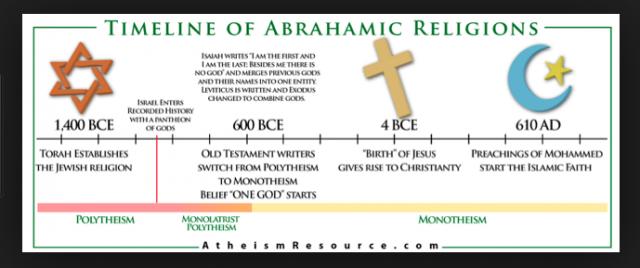
This global dissemination of the most pervasive psy op of our time helps explain the toxic ingredients of the concocted mental stew that encourages many to see as “normal” the weird spectacle of the IDF’s heavily-armed air and ground attack on the Indigenous peoples enclosed in Israel’s own dank prison colony of Palestinian captivity. The Gaza debacle puts on clear display one of the most abysmal core principles of the Global War on Terror that announced its existence after 9/11 with a semantic absurdity. Fighting terror with war makes no sense. War is the very quintessence of terror, the distilled essence of terror.
Human Shields, Terrorists, or Victims of Genocide?
The GWOT puts in the hands of every executive branch of every Western-approved government the unilateral power to decide who is a terrorist and thus who can thus be jailed without charge, tortured in secret, and even extra-judicially assassinated. The old dichotomy of one person’s freedom fighter being another person’s terrorist was thereby declared solved, once and for all.
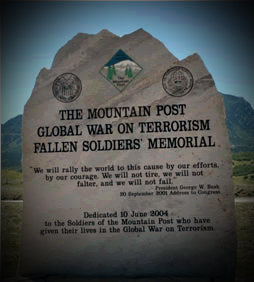
A terrorist is defined as whoever the top officials in the national security apparatuses of Israel, USA, Great Britain, France, Canada, Australia, Saudi Arabia, Qatar, Indonesia, etc. say is a terrorist. This wholesale violation of the principles of due process, habeas corpus, and universal human rights makes operational the supposition that we have all arrived at the end of history. This concept was popularized in 1992 with the publication of Francis Fukuyama’s book, The End of History and the Last Man.
The underlying assumption of the Global War on Terror is that after 2001 all strategic efforts by non-state actors to deploy force against state-sanctioned force constitute terrorism. Without any due process whatsoever the executive branches of one state after another have granted themselves the power to define individuals and groups as terrorists.
Once this determination has occurred in private, with no need to show evidence, face questions, or appeal of any kind, those identified as terrorists become subject to capital punishment. Those thus murdered, now to be counted in the millions, are usually not extended even the civilities of the guillotine, the noose, or the electric chair let alone the judgment of one’s peers in a court of law.
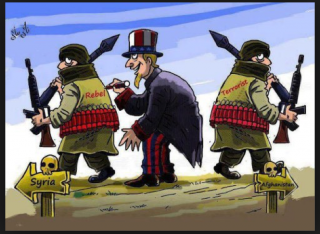 The barbaric system is wide open to gross abuse in order to add further protections for the guilty and the powerful from even the possibility of facing recriminations from the innocent and powerless victims of their imperial crimes. The jurisprudence of the Global War on Terror cuts against some of the most crucial juridical principles supposedly at the core of Western values. The Israeli state’s invasion of the Gaza concentration camp puts on bold display these juridical abominations that systematically contradict international criminal law at every turn.
The barbaric system is wide open to gross abuse in order to add further protections for the guilty and the powerful from even the possibility of facing recriminations from the innocent and powerless victims of their imperial crimes. The jurisprudence of the Global War on Terror cuts against some of the most crucial juridical principles supposedly at the core of Western values. The Israeli state’s invasion of the Gaza concentration camp puts on bold display these juridical abominations that systematically contradict international criminal law at every turn.
The sick principle presented by the Israeli government to the world, but particularly to the citizens of the expansionary settler state of Israel, is that all civilian casualties in Gaza including children are implicit “terrorists” because the Al-Qassam Brigades operate in their midst. The victims of indiscriminate state terror are defined as “human shields” whose snuffed-out lives can be traced back not to Israeli-launched ordinance smashing into their bodies but to their own actions and those of their families.
This blaming of the victims for their own victimization is similar to telling those subjected to rape that they are to blame for the violations they have suffered. Where is the available space within the open-air prison of Gaza for the armed Palestinian fighters to hive themselves off from civilians imprisoned in the oversized Israeli jail? The Gaza prison is very much comparable to the Warsaw Ghetto where Jews were corralled in the Second World War.
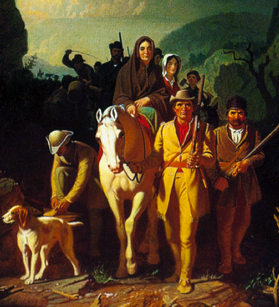
With the Global War on Terror’s implicit assumption that history is at an end, all the turmoil entailed in transformative events like the French Revolution, the Russian Revolution, or the American Revolution need not be revisited. The murderous dynamics underlying the current state structures of, for instance, China, Israel, and the Latin American countries must not to be repeated by any other subjugated people no matter how unjust the fate afforded them at the end of history. The launching of the Global War on Terror in the United States, a country born of a violent rebellion mounted by well-armed militias against the duly constituted authority of British North America is especially ironic.
Many issues of great contemporary import are raised by the current definition of “terrorism” being deployed as justification for the Israeli state’s most recent assault on stateless Palestinians. These Palestinians include some who are attempting armed resistance within the confines of the Gazan concentration camp. The controversies swirling around Israel’s ground and air invasion of Gazan homes, schools, hospitals, and emergency shelters arise in a global civilization whose main relationships of power have frequently been shaped by strife and warfare.
The experiences of Palestinian people subjected to mass displacement and repressive subjugation replicates similar processes embedded in the history of, for instance, the United States, Canada, and Australia.
In these countries, Indigenous peoples have been systematically eliminated displaced, dispossessed, and disenfranchised to clear the ground for White setter colonies. Will the world community permit the Israeli state to re-enact these examples by persistently pushing Jewish settlements eastward and by continuing to create conditions purposely calculated to make life impoverished and unbearable for Palestinians pushed to the very margins of almost every index of wellbeing and survival?
Quite clearly we are not at the end of history. If such an end were to occur it would certainly not be because, as Francis Fukuyama argued in 1992, humanity has come to the conclusion of our evolutionary journey having now discovered the perfect combination of liberal democracy and open markets. If the end of human history was to happen it would more likely come about because of some debacle of unbridled nuclearized militarism such as that which would seem to flow inevitably from the current agendas of those who have seized the reigns of banking, state, and corporate power at the highest global level.
The Debacle in Gaza as an Indicator of a Great Malady at the Core of Global Civilization
The plight of the displaced, jailed, bombed, and murdered Palestinians points to larger realities signifying a lethal contagion that has taken hold of the current political economy of our emerging global civilization. The many indexes of injustice, inequality, and ecological disaster show gross deterioration rather than improvement. Those in control of banking, state, and corporate power at the highest levels are not serving the betterment of the human condition but are only serving a minuscule segment of the global population that has made its own acquisition of immense wealth and control the highest priority.
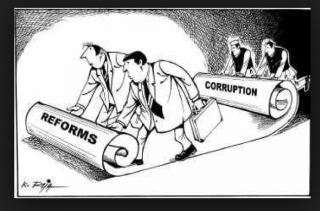 This subversion on high is reflected in the domination by corporate and foreign lobbyists of our legislatures, parliaments, and other representative assemblies. Humanity’s limited progress in moving toward democratic ideals has been reversed, especially by those that control the content of mass media. Under these subversive conditions, where constructed illusions are regularly presented as fact, citizen activism exclusively from within current systems of legislated change is insufficient in itself. History has not ended with the achievement of some ideal mechanism of decision-making and commerce. Quite the opposite is true. Governance through deceit, election fraud, bribery, and intimidation is running rampant and those that currently dominate the ruling heights of state power are often not the legitimate custodians of high office. The many kleptocrats and psychopaths at the top are enemies rather than custodians of the public interest and the common good.
This subversion on high is reflected in the domination by corporate and foreign lobbyists of our legislatures, parliaments, and other representative assemblies. Humanity’s limited progress in moving toward democratic ideals has been reversed, especially by those that control the content of mass media. Under these subversive conditions, where constructed illusions are regularly presented as fact, citizen activism exclusively from within current systems of legislated change is insufficient in itself. History has not ended with the achievement of some ideal mechanism of decision-making and commerce. Quite the opposite is true. Governance through deceit, election fraud, bribery, and intimidation is running rampant and those that currently dominate the ruling heights of state power are often not the legitimate custodians of high office. The many kleptocrats and psychopaths at the top are enemies rather than custodians of the public interest and the common good.
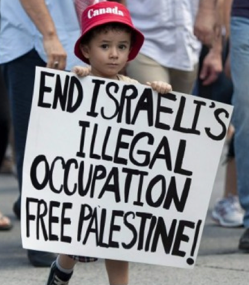 The complex of elites at the top that engineered and then exploited 9/11 to mount the Global War on Terror is heaping illegitimacy upon illegitimacy in the name of fighting “terror.” As is made very clear in the profoundly inequitable relationship between the Israeli state and the Palestinian people, state claims of a right to monopolize the instruments of force can give cover to very extreme acts of international criminality.
The complex of elites at the top that engineered and then exploited 9/11 to mount the Global War on Terror is heaping illegitimacy upon illegitimacy in the name of fighting “terror.” As is made very clear in the profoundly inequitable relationship between the Israeli state and the Palestinian people, state claims of a right to monopolize the instruments of force can give cover to very extreme acts of international criminality.
People and peoples must retain the option of meeting force with force on a variety of fronts for humanity’s self-defense and to create the conditions for a better, more just, more equitable, and ecologically sustainable world.
The extent of the betrayal at the top is currently being reflected here in Canada by the fact that the leaders of all three major political parties have agreed with the counterintuitive position that most of the blame for the current situation in Gaza adheres to the Palestinians while it is the citizens and government of the Israeli state that are the primary victims.
Canadians are thereby deprived of the possibility of even addressing at the ballot box the Canadian government’s own substantial role in sanctioning and assisting the lethal imbalance of the Palestinian-Israeli relationship.
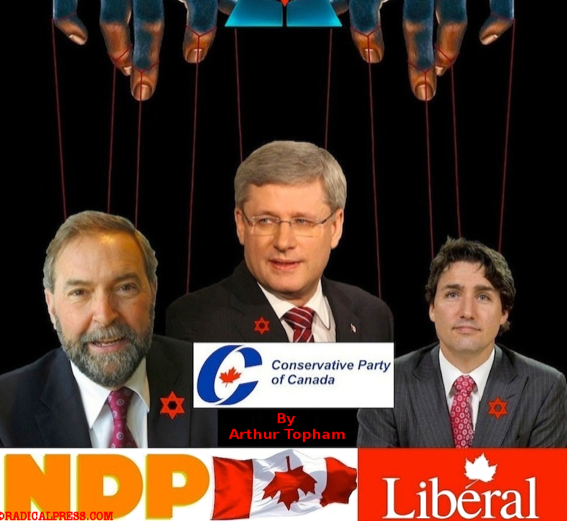
Her Majesty’s Loyal Opposition led by Thomas Mulcair will not oppose. Nor will the third-place Liberal opposition party of Justin Trudeau deviate from the policy line of Prime Minister Stephen Harper, a zealous Christian Zionist, on the Gaza debacle. Thus we as Canadians have no possibility of voting our conscience or of even witnessing significant political debate among our elected officials presenting a range of perspectives on such a crucial matter. Our parliamentary democracy is thereby diminished and demeaned through a collective betrayal by our elected officials.
Nelson Mandela, Sitting Horse and Ho-Chi-Minh: On the Need for Historical and Comparative Context
The crisis in Gaza speaks of a profound need to look deeper into history for examples of how other oppressed peoples have tried to respond in earlier times to the most brutalizing forces of imperial colonization. This line of investigation leads directly to some reckoning with the freedom fighter/terrorist dichotomy.
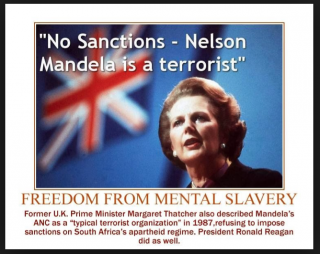 The life and times of Nelson Mandela provide us with a very recent and accessible example of an important international figure once condemned as a terrorist to nearly three decades in prison. Was Nelson Mandela a freedom fighter or a terrorist when, after the Sharpeville massacre of 1960, he assumed leadership of the Spear of the Nation, the armed wing of the African National Congress, the current ruling party of South Africa?
The life and times of Nelson Mandela provide us with a very recent and accessible example of an important international figure once condemned as a terrorist to nearly three decades in prison. Was Nelson Mandela a freedom fighter or a terrorist when, after the Sharpeville massacre of 1960, he assumed leadership of the Spear of the Nation, the armed wing of the African National Congress, the current ruling party of South Africa?
Were Sitting Bull and Crazy Horse terrorists or freedom fighters when they led an armed resistance challenging the authority claimed by the US government to remove Indigenous peoples of “the West” from their Aboriginal lands and enclose them in enclaves of isolation and death similar to the Gazan concentration camp?
How are we to remember the Battle of Little Bighorn of 1876 when this united force of Aboriginal soldiers defeated the US Armed Forces’ Seventh Calvary led by General George Armstrong Custer?
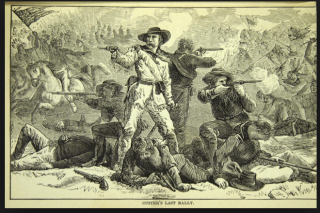
To what extent is the Israeli government duplicating the US government’s old strategies of western expansion through Indian removal, Indian pacification, and Indian wars as the IDF deploys state violence to support the illegal expansion of Jewish settlements into the Arab Palestinian reserve to the east of Israel’s formal boundaries? Is the compulsion of the Jewish state to expand more extreme or less extreme than earlier rounds of European and Euro-American expansionism? How is the Israeli version of Jewish Manifest Destiny similar to or different from its triumphalist antecedent as expressed in the transcontinalization and globalization of US power?

The aggressions on the dominant side of the relationship between the Israeli state and the Palestinian people include neither initiatives to convert Indigenous people to the religion of the colonizer nor to assimilate them into the dominant culture as a prelude to the extension of citizenship in the Jewish state. Since the era of the founding of the Jewish Homeland and then the Jewish state, the sole impetus has been to expel, eliminate, isolate, subjugate and control the Indigenous peoples.
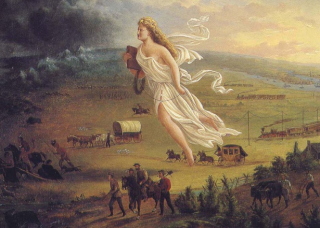
The Arab population of Palestine has long been viewed by their Israeli usurpers as obstacles to the founding and slow but unrelenting expansion of the Jewish state. They have never been viewed as potential converts to Judaism on their way to being assimilated into the main body of Israeli citizens.
Was Ho-Chi-Minh a terrorist or a freedom fighter when he opposed Japanese, French and especially US domination of Vietnam in armed struggle with those seeking to dominate and control the Indigenous peoples of his country?
A major part of the resistance of Ho-Chi-Minh’s Viet Cong was a very elaborate network of constructed caves, the Cu Chi Tunnels. These tunnels provided the indigenous resistance movement with ways to move around their members and supplies throughout the besieged country, including that part of the territory under enemy occupation. The Cu Chi Tunnels provided some degree of protection from US carpet bombing, napalm attacks, Agent Orange attacks, sniper attacks, land mines, etc.
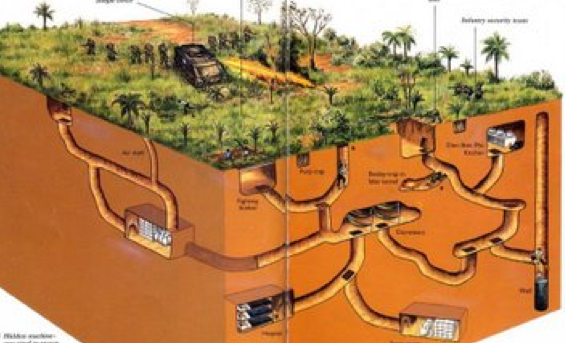
The Gazan Palestinians have similarly constructed elaborate networks of tunnels referred to by the Israeli government as “terror caves” or “attack caves.” These caves provide some measure of protection from Israeli invasion. They provide the Gazan fighters with places to hide and store their weapons. In the past, the caves also supplied a means of obtaining provisions and supplies from Egypt, supplies that were otherwise denied because of the Israeli blockade.

This source of provisions and economic activity for the blockaded people of Gaza ended abruptly earlier in 2014 when Egyptian General, Abdel Fattah el-Sisi, came to power. An embodiment of the sabotage of the democratic impulse of the Arab Spring, el-Sisi continues the autocracy entrenched in the ongoing rule of the Egyptian Armed Forces.
El-Sisi and the forces behind him overturned the elected government of Mohamed Morsi, a leader of the political wing of the Muslim Brotherhood. A ruthless opponent of the Muslim Brotherhood and its Gaza offshoot Hamas, el-Sisi closed down the Egyptian access points to the caves helping the Israeli government to increase its stranglehold on the movement of material goods into the blockaded enclave.
As July turned into August the Netanyahu government declared that the seizure of full control of the Gaza tunnels was the primary goal of the invasion. The publicly-stated priorities of the IDF in Operation Mighty Cliff have shifted from the campaign’s inception when the main declared need was to take revenge for the still-ill-explained deaths of three Israeli teenagers.
The harsh treatment of the caged Palestinians of Gaza and the Occupied Territories of the West Bank form one part of a more elaborate complex of oppressiveness. While the Palestinian groups living under the iron fist of Israel’s occupation constitute the front line of Arab obstacles to the Jewish state’s territorial ambitions, there are Palestinian refugees and their descendants suffering the consequences of the Nakba and subsequent rounds of ethnic cleansing.
Almost three generations after the initial ethnic cleansing ushering in the existence of the Israeli state, some of the displaced people still reside in Palestinian refugee camps in Jordan and elsewhere in the region. Many millions more of the uprooted Palestinians reside in new homes throughout the world. These displaced Palestinians are denied the right to return to the land of their ancestral homes, most of them now demolished, even as Jews throughout the world are extended citizenship automatically as a “birthright” when they migrate to Israel.
PART TWO
Toussaint L’Overture, Tecumseh and the Palestinians: The Struggle of Indigenous People and Black Slaves for Liberation from Supremacist Tyranny
In the remainder of this essay, I shift focus to add historical and comparative context. I shall look at two interrelated instances of popular movements composed of peoples and groups facing conditions of similar bleak severity to those faced by the caged Palestinians of Gaza and the Occupied Territories. Both these historic popular movements arose in the late 1700s and the early 1800s, an era of great intellectual and ideological ferment channeled most consequentially into the American Revolution and the French Revolution.
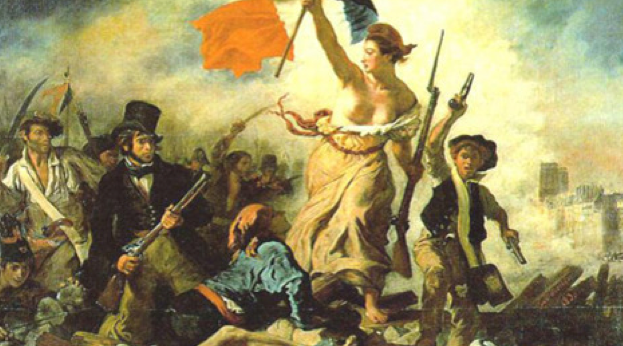
Dynamic young men of unusual genius, courage, and stamina led both popular movements. Both leaders acted decisively on the realization that they had no choice but to combine organized and disciplined military operations with adept attempts of mediation, diplomacy, and alliance-building involving the key decision-makers in the superpowers of the era.
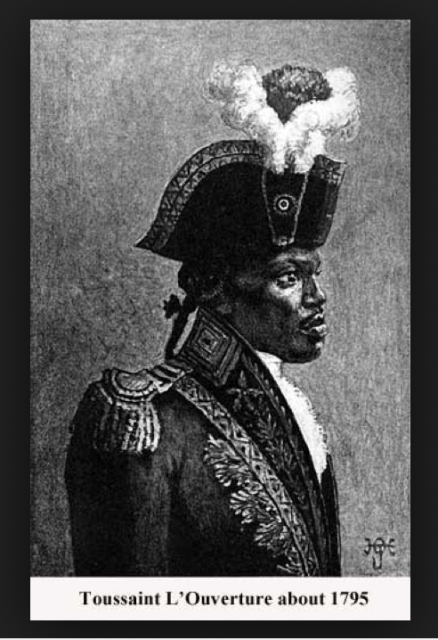 One of the highlighted leaders is Toussaint L’Overture. Between 1791 and 1803 Toussaint was instrumental in giving coherence and discipline to a slave revolt that arose in the French Caribbean sugar island of San Domingue, once the most lucrative colony in the world. The French Revolution formed the overarching phenomenon creating the political and ideological environment for Toussaint’s enlightened tutorship and command of San Domingue’s organized army composed of former slaves.
One of the highlighted leaders is Toussaint L’Overture. Between 1791 and 1803 Toussaint was instrumental in giving coherence and discipline to a slave revolt that arose in the French Caribbean sugar island of San Domingue, once the most lucrative colony in the world. The French Revolution formed the overarching phenomenon creating the political and ideological environment for Toussaint’s enlightened tutorship and command of San Domingue’s organized army composed of former slaves.
The slave revolt along with the Black army’s successful defense against foreign enemies and against Napoleon Bonaparte’s attempt to restore slavery created the conditions for the emergence of Haiti in 1804. Haiti became the second republic of the Americas after the US republic which received international recognition from Great Britain in 1783.
The other featured leader is Tecumseh, the inspirational sage of the most concerted and well-organized armed resistance ever faced by the military branch of the US government in the entire course of its transcontinental expansion. The westward expansion of the United States through Indian removal, containment, military invasion, and unregulated settler vigilantism displays many similarities with the treatment of the Palestinians in the establishment and expansion of Israel.
The final stages of this saga of transcontinental empire building by the United States would become one of the most mythologized chapters in the making of the so-called “West.” On his way to becoming US president, Theodore Roosevelt contributed to the triumphalism associated with the speed and lethal efficiency of US expansion with his popularizing history book entitled The Winning of the West.
Tecumseh understood the necessity of strengthening and extending a pre-existing confederacy of Indigenous peoples if the fledgling United States was to be blocked in its westward expansion into Indian Country. Tecumseh recognized and worked against the divide-and-conquer tactics deployed by the US government against the larger community of Indian nations, especially during the presidency of empire-builder and slave owner, Thomas Jefferson.
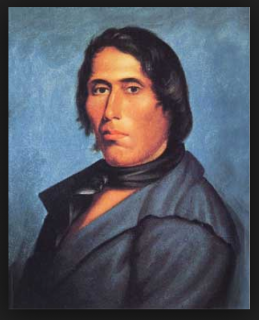
The outgrowth of Tecumseh’s travels and diplomatic representations to many First Nations was the Indian Confederacy of Canada. In the War of 1812, the military wing of this confederacy of First Nations fought decisively against the US Armed forces in the frontier districts of Canada and the United States. Tecumseh’s forces fought in alliance with the British imperial government which was then preoccupied with fighting Napoleon’s army in Europe. Entering into the vacuum resulting from the absence of British troops on the frontier, the soldiers of Tecumseh’s Indian Confederacy saved Canada from annexation by a hostile power.
The unity of San Domingue’s former slaves and of the confederacy of Indigenous peoples in the interior of North America drew on powerful religious movements. In San Domingue, many of the self-emancipating slaves had once lived in West and Central Africa before being uprooted and sold into bondage. Their ritualistic devotions animated the Voodoo religion. The slave revolt was accompanied by an upsurge of Voodoo spirituality on the Caribbean sugar island. This phenomenon renewed African traditions that helped the displaced peoples regain a sense of brotherhood and sisterhood in their shared revolt against their slave masters and colonizers.
In the prelude to the Indian Confederacy of Canada’s armed mobilization, Tecumseh’s bother, Tenkswatawa, preached a prophetic message calling for the purging of imported influences from the United States as the necessary condition for the renewal of proud and independent Aboriginal self-assertiveness. Tecumseh helped channel the outbursts of spiritual devotion among his own people towards more secular and pragmatic objectives.

The religious politics of Hamas and its armed self-defense of Palestinians in Gaza is more complex and many-faceted. Hamas is an Islamic organization rooted in the Muslim Brotherhood whose origins lie in Egypt. The Israeli government helped encourage and build up this party of Islamic theocrats as a check against the more secular and socialist influence of Yasser Arafat’s Palestinian Liberation Movement and its outgrowth, Fatah. Arafat’s secularism was, in one way at least, more inclusive because Palestinian of all persuasions, including Palestinian Christians, liberals, and atheists could more easily organize alongside the Muslim majority to resist the oppression of their colonizers.
The Israeli policy of helping advance the agendas of Islamic theocrats in Gaza and the West Bank was quite consistent with US foreign policy in the Cold War. The Cold War was anything but cold for, for instance, the Indigenous peoples of Indochina and parts of South Africa. In Eurasia and the Middle East especially, the US deep state, including the CIA, sought to build up the infrastructure of militant Muslim theocrats as a check against the growth of atheistic communism or more secular forms of pan-Arab socialism espoused by Abdel Nasser, Karim Kassem of Iraq and Arafat’s PLO. In these initiatives, they were assisted by the rich coddled Saudis, ultra-conservative custodians of the interests of the most prominent US-based oil interests.
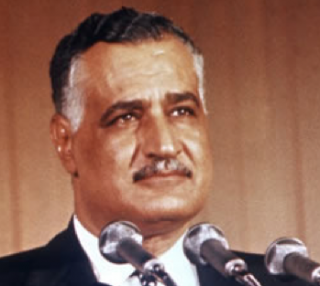
Ample US assistance was extended to the Muslim Brotherhood and other Islamic groups including the mujahedeen, the armed opponents of the Soviet-backed government of Afghanistan. Led by CIA agent Osama bin Laden, the mujahedeen was made to provide “the West” with “al-Qaeda,” its necessary, all-purpose replacement enemy after the fall of the Soviet Union. The Israeli government together with Anglo-America and countries like Bahrain, Abu Dhabi, Canada, and France have continued to arm, organize, finance and encourage Islamic jihadists for deployment against the Gadaffi regime in Libya, the Assad government of Syria, and now ISIS’s attack on western Iraq. An amalgam of those involved in the al-Qaeda psy op as well as Sunni opponents of the Shia majority in Iraq, ISIL is the most recent expression of the need to produce Islamic enemies to animate the Global War on Terror; to reinforce Benjamin Netanyahu’s anti-Islam interpretation of “the West.”
In the prelude to the current debacle Hamas and Fatah, of which the PLO is a part, were able to transcend their former differences uniting the representative organizations of Palestinians in Gaza and in the Occupied Territories. The target of an assassination attempt in 1997 by the Israeli secret service, Mossad, Khaled Meshal is the current political leader of Hamas. A rich businessman currently living in Qatar, Meshal does not fight by the side of Hamas soldiers as Tecumseh and Toussaint fought alongside their respective armed forces.
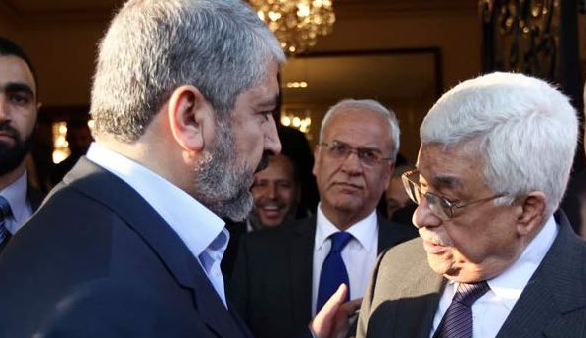
Toussaint and Tecumseh were part of the circle of activity surrounding the careers of better-known figures like Thomas Jefferson, Robespierre, and Napoleon. The fact that the names of Toussaint and Tecumseh are not as immediately recognizable as the White embodiments of one of history’s most revolutionary eras does not mean they are in any way secondary figures in the genesis of “the West.” As individuals that sprung from within those human communities most devastated and oppressed by the westward-pointing trajectory of imperial colonization, the careers of Toussaint and Tecumseh gave great focus to the lethal injustices heaped on those dark-skinned peoples inhabiting “the West’s“ violent frontiers of territorial and commercial expansion.
Both Toussaint and Tecumseh would meet their demise as martyrs to the causes they died to defend and advance. Both men were far ahead of their time, embodying the aspirations of groups that to this day have not been afforded a fair share of the promised ideals of life, liberty, and the pursuit of happiness. Indeed, the dispossession of the Indigenous peoples of the United States has enabled many citizens of the White settler society to acquire the primal capital that would send them on their way in pursuit of the American Dream’s most sought-after source of happiness, privately-held wealth. The array of formal and informal repressions directed at the Indigenous peoples and Black populations of the Americas over centuries expresses many of the same impulses delivered at a more rapid-fire pace on the displaced Indigenous peoples of Palestine.
The text below is an excerpt from a work in progress by the author. It makes frequent reference to the Treaty of Paris of 1783, the agreement that led to the end of hostilities between the British imperial government and the fledgling United States of America. In the Treaty of Paris, the government of Great Britain included in the transfer of land to the US government a vast territory north of the Ohio River.
This territory north of Ohio had previously been promised to the Indigenous peoples in the negotiated treaty as a reserved Indian Territory under British imperial protection. Questions about the legitimacy of this transfer of reserved land to the United States created many uncertainties that helped establish Tecumseh’s quest to mobilize the Indian Confederacy of Canada in order to secure through military means the strategic basis on which to negotiate the existence of a secure Aboriginal polity with permanent and fixed borders north of the Ohio River.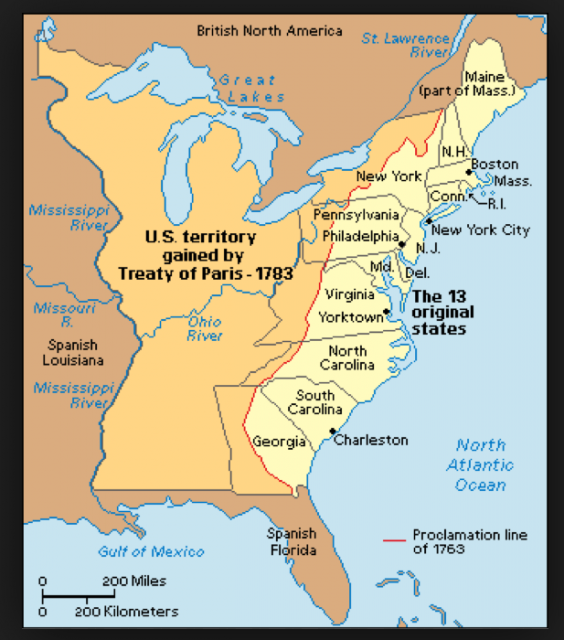
King George’s Royal Proclamation of 1763 helped establish the constitutional framework for the alliance between Tecumseh’s soldiers and the British imperial government in the War of 1812. Following the war between the imperial forces of France and Great Britain in North America, the Royal Proclamation outlined the terms for the integration of the old French-Aboriginal Canada of New France into British North America.
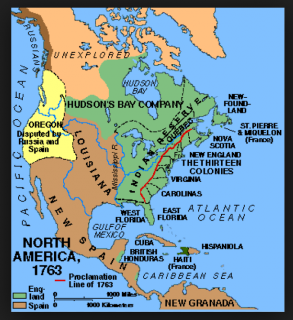
The Royal Proclamation included important provisions reserving for Indigenous peoples the eastern half of the Mississippi Valley together with the watershed of the Great Lakes. Moreover, this constitutional instrument laid out the terms for an orderly and gradual westward expansion of Euro-American settlements including a provision outlining the need for negotiations to obtain Indian consent for further incursions into the reserved Indian Country.
Even these limited protections for the titles and rights of Indigenous peoples proved unacceptable to those Anglo-American expansionists who went on to found the United States on the basis of precedents that are now being replicated by the founders and builders of Israel. Just as the United States was founded in a rejection of the British imperial requirement that Indian consent was required for the expansion of Euro-American settlements, so the founding of Israel and the expansion of Jewish settlements into the occupied territory have taken place and continue to take place without Arab consent.
This history may help explain the intimacy of the alliance, but especially militarily, between the governments of Israel and the United States, two polities born out of a profound sense of divine mission adhering to those identified in the Old Testament as God’s Chosen People. The fabric of this alliance, however, is being frayed by changing public opinion as people globally respond with revulsion to the horrific images on social media depicting the devastating human consequences of the Israeli Defense Forces’ latest invasion of Gaza.
Given the deep involvement of Western governments in creating and sanctioning the conditions for this Israeli invasion pointed largely at civilians in clear violation of international law, Gaza could currently be described as “the West’s” own concentration camp enclosing some of the survivors of the ethnic cleansing the Indigenous peoples of Palestine have endured. Significantly both the United States and the state of Israel were founded through the process of pushing aside the governance of the British Empire. In its day the British Empire encompassed a greater diversity of religions, ethnicities, political economies, and indigenous systems of governance than any other polity before or since.
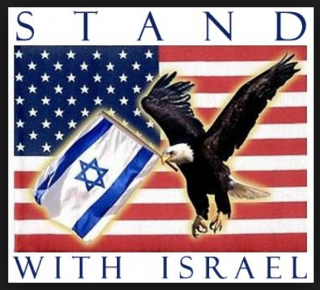
Empire and Revolution in the White Nations’ Trans-Atlantic Colonization
The Treaty of Paris of 1783 violated the principle confirmed in the Royal Proclamation of 1763 that any change in the status of the Crown-Aboriginal Indian reserve north of the Ohio River could only be altered with Indian consent. The territorial provisions of the Treaty of Paris offered powerful evidence that the promises to Indigenous peoples of the colonizing powers were expendable when it came to accommodating the interests and priorities of the so-called “White Nations.”
The nature of relations among the “White Nations,” was specifically referred to in 1793 when representatives of US President George Washington tried to explain to delegates of the “Confederate Indian Nations” the powers “granted” by Great Britain to the United States in the Treaty of Paris. The 1793 assembly took place on the Miamis River as the fledgling US Armed Forces were preparing an attack on the very people they were trying to pacify in treaty discussions.[i]
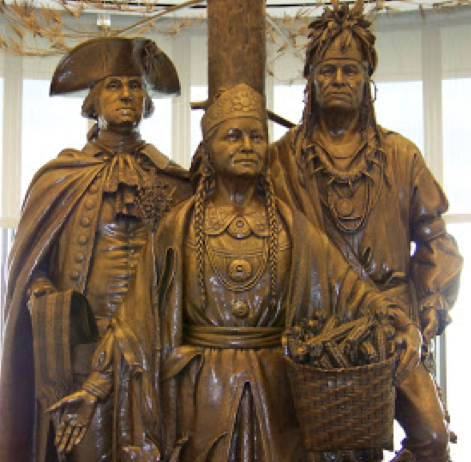
The conciliatory gestures made by the US government to the Confederate Indian Nations were small compared to the insult of dividing up and apportioning in 1783 vast areas of North American land without any reference whatsoever to the wishes of the Indigenous peoples most affected by the sweeping geopolitical transformations. The Eurocentrism displayed in the Treaty of Paris was in the late eighteenth century the rule rather than the exception. The Treaty between Great Britain and the United States was quite consistent with international practices going back to the era of Christopher Columbus’s transformative voyage of 1492.
In 1493 and 1497 the Pope “donated” to the Spanish and Portuguese Crowns exclusive rights to own and exploit the Americas. This unilateral act initiated patterns of supremacist exclusion of Indigenous peoples in imperialism’s practice that continue to this day. The assumed right of European powers to decide among themselves how the world and its resources should be divided was modified, but not radically changed, when the White settler republic in North America was added to the exclusive club of the so-called White Nations. Indeed when the circle of sovereign international powers was extended in 1783 in a way that excluded Black and Aboriginal Americans from all decision-making processes, the racist cast of international relations at the highest level was highlighted and confirmed.
A century after the Treaty of Paris the division of sub-Saharan Africa into European colonies after the Berlin Conference of 1885 provided yet another classic example of the imperial powers deciding how land should be politically configured without any reference whatsoever to the opinions, interests, and rights of the Indigenous peoples. This phenomenon would replicate in Africa older processes that had excluded the Indigenous peoples of North America from any say in the primary decisions about how their ancestral lands would be apportioned in, for instance, the Treaty of Paris, the Louisiana Purchase of 1803, the transfer of Alaska from Russia to the United States in 1867, or the addition of British Columbia to the Dominion of Canada in 1871.
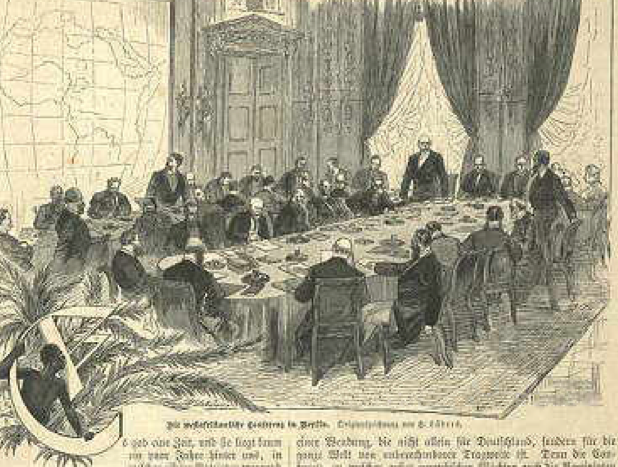
Throughout the 1500s, 1600s, and much of the 1700s, many of the claims of imperial authority were framed in terms of the assumed superiority of Christians over non-Christians. Those outside Christendom were sometimes described as pagans, infidels, or savages. As the trans-Atlantic slave trade gathered impetus in the 1600s and 1700s, claims about the inherent superiority of pale-skinned people over dark-skinned people began to color some justifications for empire building. This turn of language was prominent, for instance, in the explanation given in 1793 to the Confederated Indian Nations by US officials attempting to explain Great Britain’s “grant” of authority to the US “White Nation.”
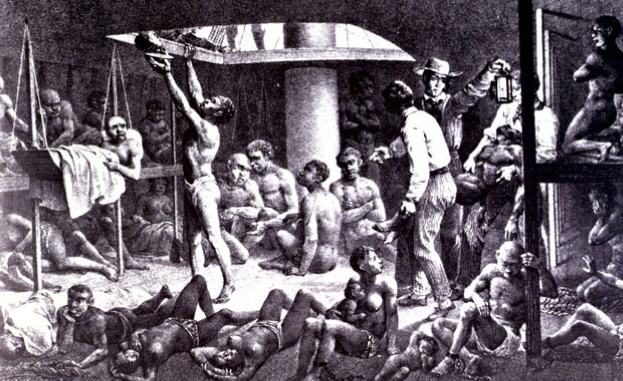
The French Revolution had been underway for four years when in 1793 President Washington’s representatives explained to delegates of the Confederate Indian Nations that Great Britain had granted the United States a monopoly over the purchase from Indigenous peoples to the Aboriginal “right of the soil.” Even as US officials were attempting to explain to the Confederate Indian Nations the mysteries of law that gave the “White Nations” exclusive authority to rearrange the world order at the highest level, developments in France were calling these very principles into question.
The makers of the French Revolution cast a critical eye over virtually all impositions of arbitrary power that made commoners subordinate to monarchs and aristocrats, dark-skinned slaves subordinate to fair-skinned slave owners, and Native peoples in the colonies subordinate to the authority of imperial rulers in the metropolitan centers of the empire.
The genesis of the French Revolution was indeed connected to the political experiment promoted in Paris by Benjamin Franklin.
Certainly, the ideas generated by and around Franklin were factors in the intellectual ferment that caused the French masses to turn against their governors. Moreover, King Louis XV’s generous financing of the American Revolution helped plunge France deeply into debt. Accordingly, the French monarchy’s sponsorship of North America’s experiment in the creation of a White settler republic had indeed been a significant factor in the demise of the old regime.
In 1793 the demise of the old guard was dramatized in the public beheading of King Louis XVI, the son of the USA’s monarchical benefactor, in the Place de la Revolution.
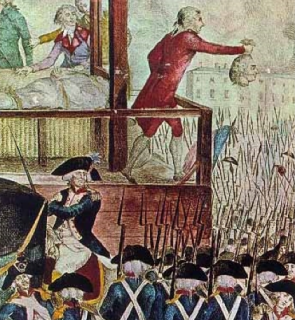
As the beheading of the French King harshly illustrates, those on the Jacobin extremes of the French Revolution were far more critical of the existing social order than the bourgeois and entrepreneurial class that took the lead in breaking away from the British Empire to form the United States. The revolutionary fires ignited in France helped inspire liberation projects on both sides of the Atlantic Ocean. In the years ahead, for instance, the Shawnee sachem Tecumseh would come to resonate with a righteous determination not to accept the dictate that the Indigenous peoples of North America must always move aside or prematurely exit life altogether in order to make way for the expansion of the White Nations.
Tecumseh’s Shawnee people had been among the first to face the onslaught unleashed after the Treaty of Paris of 1783 opened the floodgates for the westward migration of Euro-American peoples into the newly-created United States. Rooted in the land that became the frontier states of Kentucky and Tennessee after the obstacle of the Royal Proclamation had been blasted aside in the eruptions of the American Revolution, Tecumseh’s Shawnee family had been decimated in the violent expansionary onslaught. As Euro-American settlements pushed westward across the Appalachian Mountains the orphaned Tecumseh and his surviving siblings backed away along with other Native refugees from the violent frontier incursions of the liberated White settler republic. Along with his brother, who would later create a sensation in Indian Country as a prophetic Aboriginal preacher, Tecumseh would come to settle in the upper Mississippi Valley south of Lake Erie.
Tecumseh’s tumultuous life would culminate in his becoming the chief strategist and general of the Indian Confederacy of Canada. He would lead the most effective Aboriginal resistance ever mounted in the entire history of the transcontinental expansion of the United States.
In the War of 1812, Tecumseh would organize with the British backing the Indian assault on the expansionary policies of Napoleonic France’s North American ally in the War of 1812.
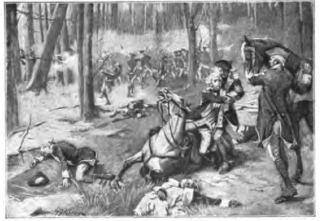
As he committed himself to the hard and dangerous life of a freedom fighter Tecumseh joined a small Shawnee band in 1783 that sought to prevent the White pioneers’ flatbed boats from moving down the Ohio River from Pennsylvania. At the time of the USA’s emergence as an internationally-recognized power, Tecumseh was engaged in the struggle of the Indigenous people to stop or at least slow down the new polity’s westward expansion. By 1793 Tecumseh was sharpening his military skills yet further in a series of battles that saw the Indian Confederacy achieve some early victories over the ill-organized frontier army of the United States.
In 1793 there was considerable crossover in the tragedies imposed on the lives of dispossessed Indigenous peoples and enslaved African Americans. In both instances, the ruthlessness of class struggle converged with the injustices meted out by what some have described as “the aristocracy of the skin.” There was a possible silver lining, however, in the convergence of ruthlessness directed on the one hand at dispossessing Black Africans of their very persons and on the other at dispossessing Indigenous peoples of their ancestral lands through genocide and land theft. There was great potential in the prospect of combining the freedom struggles of both groups, those most besieged by colonialism, class oppression, and the rush for spoils on moving frontiers of newcomer acquisition.
Toussaint L’Overture and the French Revolution, a Unique Case of Self-Emancipation and Decolonization by Former Slaves
In 1793 the spirit of the French Revolution had ignited the fires of resistance among the massively oppressed population of a half million Black slaves in the French sugar colony of San Domingue. In August of that year, a gifted former slave named Toussaint Breda began to give disciplined military direction and coherence to the slave revolt that in 1804 would transform San Domingue into the republic of Haiti. The republic’s founders adopted a new spelling of their country’s old Indian name, Ayiti. Ayiti in the language of the Taino, a sub-branch of the Arawak people, means mountainous land.
As with most of the sugar islands of the Caribbean, the few survivors of the decimated Indian populations tended to intermingle with the early waves of incoming enslaved Africans. It can thus be said that the self-emancipated Black slaves of the Haitian republic paid tribute to their own Indian ancestors when they formally broke away from their slave owners and colonial masters. They chose a name for their new polity which declared solidarity with the kind of liberation struggle whose best expression would be the in armed resistance organized by Tecumseh of the Indian Confederacy of Canada against the expansionary policies of the United States.
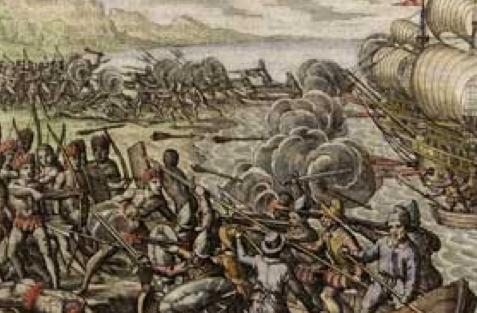
Interestingly the US government, which did all in its power to prevent the convergence of resistance between Black slaves and Indigenous peoples, did not recognize Haiti diplomatically until the time of President Abraham Lincoln’s Emancipation Proclamation of 1862. After the federal government’s defeat of the slave-owning confederacy of southern states, the US geared up for its final and most mythologized era of North American Indian wars. This phase of the Indian wars would provide the basis for Hollywood Westerns, those “cowboy and Indian”
stories that did so much to confirm the ethos of frontier expansion as the basis of the rising superpower’s aggressive orientation to relations with Indigenous peoples globally.
These US Indian wars culminated in 1890 in the US Seventh Cavalry’s massacre of Bigfoot’s band at Wounded Knee 1890 in Dakota Territory. This unprovoked slaughter was in revenge for the Indian defeat of the same military unit under Major General George Armstrong Custer’s command in the Battle of Little Bighorn in 1876.
Like so many descendants of slaves in the United States and elsewhere would do subsequently, Toussaint left behind his slave name of Breda in 1793 as he fully embarked on a personal and collective journey towards his conception of liberty for the enslaved people of San Domingue. This trajectory of liberation would become the most prominent example of self-emancipation in the entire history of the imperial powers’ most notorious institution. Toussaint replaced the name Breda with the name, L’Overture. Toussaint’s hope was that his people would recognize and embrace their shared opening to liberty.
In August of 1793, Toussaint L’Overture declared slavery abolished in San Domingue. He affirmed, “Brothers and friends. I am Toussaint L’Ouverture, My name is perhaps known to you. I have undertaken vengeance. I want Liberty and Equality to reign in San Domingue. I work to bring them into existence. Unite yourselves to us, brothers, and fight with us for the same cause.”
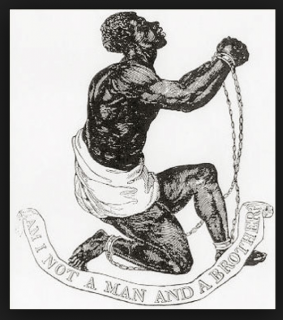 Toussaint always considered himself a loyal French citizen and a true child of both the European Enlightenment and the French Revolution. Toussaint’s championing of the anti-slavery cause in San Domingue and throughout the French, Empire resonated powerfully among the most committed Jacobins in the imperial Mother Country. The Jacobins, a whose leading figure in France was Maximilien Robespierre, dominated the revolution during its most radical phase. Many of the most committed Jacobins in France were particularly antagonistic towards the so-called aristocracy of the skin. In their eyes, the abolition of travesty of injustice epitomized by the institution of slavery became a top priority for revolutionary change.
Toussaint always considered himself a loyal French citizen and a true child of both the European Enlightenment and the French Revolution. Toussaint’s championing of the anti-slavery cause in San Domingue and throughout the French, Empire resonated powerfully among the most committed Jacobins in the imperial Mother Country. The Jacobins, a whose leading figure in France was Maximilien Robespierre, dominated the revolution during its most radical phase. Many of the most committed Jacobins in France were particularly antagonistic towards the so-called aristocracy of the skin. In their eyes, the abolition of travesty of injustice epitomized by the institution of slavery became a top priority for revolutionary change.
The position of Toussaint, Robespierre, and many hundreds of thousand others, however, was far from universal. France was at the heart of a worldwide empire wherein the trade in sugar and its derivatives, including molasses and rum, had created very large fortunes. Coffee and indigo were also integral to the slave economy of San Domingue. With this much at stake, many on both sides of the Atlantic were unwilling to accept an end to the commerce in human chattel.
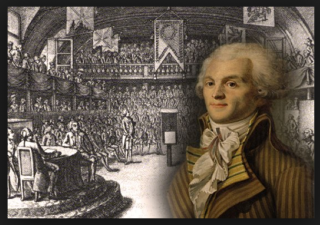
Toussaint was put in a position to test the disparity between the rhetoric of the French Revolution and the position of some of its self-proclaimed champions. The willingness of Toussaint and his followers to act on the ideals of human equality brought on an onslaught of military reactions as France’s imperial competitors made military and diplomatic bids to take control of the prize of San Dominique. The result was that Toussaint’s revolutionary army faced round after round of military aggression, first from Britain and Spain and ultimately from the French forces of Napoleon Bonaparte.
A military strongman, Napoleon stepped into the cycle of violent recriminations and counter-recriminations to seize power in the coup d’etat of November 9, 1799. The makers of the French Republican Calendar characterized this day in 1799 as 18 Brumaire, Year VIII. Their object in creating this new calendar was to banish religious and monarchical symbols from the system for measuring time.
Among the most vociferous enemies of the San Domingue revolution was the third US President, Thomas Jefferson. On taking power in 1802 this Virginian slaveholder set himself immediately to the task of isolating and undermining San Domingue under Toussaint’s rule. The US and British governments committed soldiers to Napoleon Bonaparte’s reactionary campaign aimed at restoring slavery in the most tumultuous of all the sugar and rum islands. Before he was done Napoleon would commit 60,000 French troops to this most reactionary project, condemning most of his soldiers to horrible deaths in a tropical environment at once friendly to transported Africans and unfriendly to White Europeans.
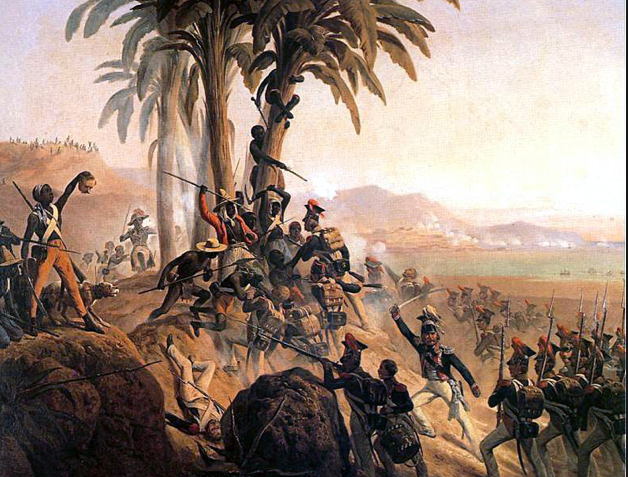
Toussaint was dumbfounded by Napoleon’s betrayal of the highest achievement of the French Revolution, namely the outlawing of slavery throughout the French empire. His confusion was reflected in his cautious and ambivalent military response to Napoleon’s invasion aimed at re-instituting the aristocracy of the skin. Instead of opposing the hostile intrusion of the invading forces of renewed slavery, Toussaint insisted on trying the diplomatic route. This decision proved fatal to him.
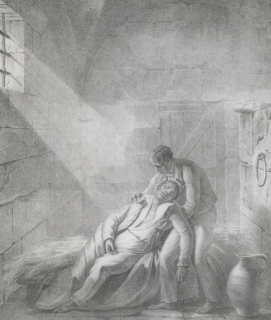
While Toussaint was on his way in 1802 to a negotiating session with officials of the French government in the Haitian capital of Port-au-Prince, Napoleon’s men captured the former slave. The great freedom fighter, perhaps the most transcendent single figure to emerge from the French Revolution, spirited him away to France. There he was sent by Napoleon to die of starvation and exposure in April of 1803 in a freezing jail cell in the French Alps.
Toussaint’s primary military lieutenant, Jean-Jacques Dessalines, took over the command of the military response to Napoleon’s hostile effort to restore slavery in San Domingue. The unscrupulous way that Toussaint had been scooped up and deported by Napoleon’s men helped clarify the extent of the hostility that former slaves faced. This violation of protocol in the prelude to a possible negotiated settlement within the French empire also symbolized the pervasive unwillingness among the forces of counter-revolution to accept that Black representatives of dark-skinned people could negotiate treaties at the highest level of international relations. The aristocracy of the skin was still deeply entrenched in the attitudes informing the conduct of those who set the prevailing motifs of warfare and international diplomacy.
With the people and army united in opposition to the invading soldiers, Napoleon’s forces were not only defeated but vanquished. The French Armed Forces faced an onslaught that left few survivors on the French side. In the aftermath of this route, Dessaline initiated the process of establishing the republic of Haiti.
Mimicking Napoleon’s actions in France, Dessalines declared himself to be Emperor Jacques I, hardly a propitious way to launch Haiti as the Americas’ second experiment in republicanism. Tragically but understandably Emperor Jacques gave the green light to revenge killings of major parts of the remaining White population. Some Whites deemed useful and supportive of the new nation were protected from the murder binge. All citizens, regardless of complexion and ancestry, were subsequently classified as “Black,” a major departure from the identity code of San Domingue which recognized 128 categories of gradated racial mixture.
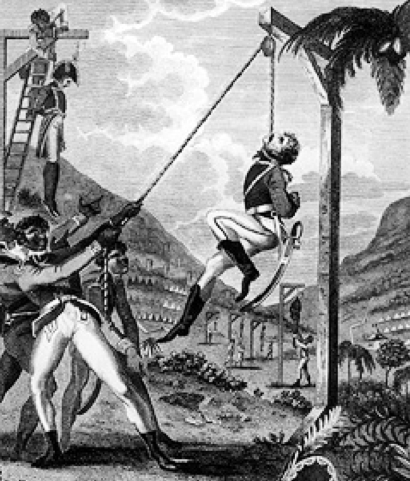 This revenge-taking added to the new republic’s subsequent isolation. The tragedy of the reverse-racist rounds of vengeance might have been mitigated if the international community, such as it was in those days, had intervened more positively to welcome Haiti into the community of nations. Not surprisingly, however, the White Nations held back from embracing the Haitian republic in the same fashion they had embraced the first republican project resulting in the confirmation of the United States of America’s sovereign independence. Spain’s unfriendly response to the existence of the new nation resulted in the continuing division of the island whose western division is today the Dominican Republic.
This revenge-taking added to the new republic’s subsequent isolation. The tragedy of the reverse-racist rounds of vengeance might have been mitigated if the international community, such as it was in those days, had intervened more positively to welcome Haiti into the community of nations. Not surprisingly, however, the White Nations held back from embracing the Haitian republic in the same fashion they had embraced the first republican project resulting in the confirmation of the United States of America’s sovereign independence. Spain’s unfriendly response to the existence of the new nation resulted in the continuing division of the island whose western division is today the Dominican Republic.
Haiti would never rise to the level of prominence of San Domingue when its lucrative slave-worked sugar plantations made the French colony one of the dynamos in the emergence of global capitalism from feudalism. Haiti would never again so capture attention as when the massive slave revolt, given military leadership and discipline by Toussaint L’Overture, became one of the central dramas of the French Revolution. As Toussaint was looking for a way to replace San Domingue’s slave economy he considered and tried to apply various innovations with the aim of extending agricultural workers’ protections and a fair share of the fruits of their labor. In modern-day terms, Toussaint was exploring the realm of trade unionism.
With Toussaint gone, however, these ideas came to naught. Most of the citizens of Haiti took up subsistence forms of agriculture creating a peasant economy that would come to co-exist with the kind of petty corruption that tends to thrive in puppet regimes. The subversion of Haiti’s government was part of a larger process as formal imperialism gave way more and more to forms of indirect rule and neo-colonialism. Puppet governments– comprador governments– have been installed in Haiti and many other former colonies. The experience of the French Revolution and its extension in San Domingue marked such radical departures from the status quo that the international ruling class developed a broad array of strategies, both formal and informal, overt and covert, in an effort to prevent such episodes from ever occurring again.
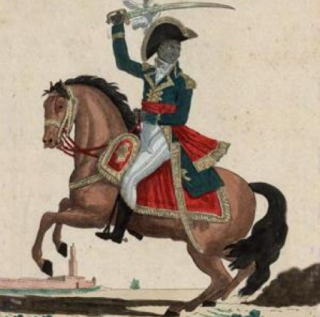 The extension of the French Revolution into the Haitian Revolution through the instrument of Toussaint L-Overture continues to echo through history in ways. As the former slave and celebrated African American abolitionist Frederick Douglas declared, “When the Black sons of Haiti struck for the freedom they struck for the freedom of every Black man in the world.”[iii]
The extension of the French Revolution into the Haitian Revolution through the instrument of Toussaint L-Overture continues to echo through history in ways. As the former slave and celebrated African American abolitionist Frederick Douglas declared, “When the Black sons of Haiti struck for the freedom they struck for the freedom of every Black man in the world.”[iii]
As a former slave who led his people away from both bondage and formal colonial rule, Toussaint L-Overture was perhaps the most transcendent figure to emerge from the French Revolution.
By all counts, he was an exemplary paragon in the quest for liberty and human equality. The resolve of Toussaint’s army and the community that sustained it were instrumental in giving force to the impetus that ultimately ended first the slave trade and then slavery itself. The Haitian Revolution has given the world its pre-eminent example combining the self-emancipation of former slaves with a decolonization movement that called into question the most repressive features of imperial rule in all its many dimensions.
In making his stand, Toussaint L’Overture significantly challenged the monopoly held by the European powers and their American proxy on deciding the criteria for who was eligible or not to exercise sovereignty and self-determination extending all the way to the highest level of international relations. Tecumseh made a stand on similar geopolitical ground. Tecumseh organized and mounted an assault on the westward expansion of the United States with the aim of bringing into existence a new kind of sovereign Aboriginal polity with fixed and secure boundaries. Now in the second decade of the twentieth-first century, it is the systematically violated rights of dispossessed Palestinians that call attention to the unfinished business of decolonization and the need to institute policies and mechanisms to enforce the protection of universal human rights.
Two Freedom Fighters
Like Toussaint, Tecumseh was a military leader and a man of color who refused to accept the exclusion of his people from the principles of universal human rights. Although this ideal was not rendered fully articulate until the Declaration on Universal Human Rights was ratified by the United Nations in 1948, the conception began to show up in the most optimistic language of the American Revolution, the French Revolution, and the European Enlightenment.
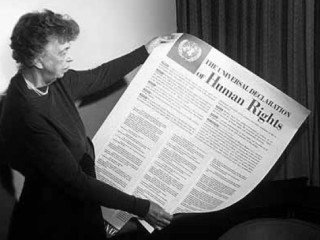
In seeking to liberate their peoples by assisting them to become recognized rights-bearing citizens organized in recognized nations and confederacies, both Toussaint L’Overture and Tecumseh sought entry to the high tables of international diplomacy in the community of nations. They sought to lead the way in changing the international status attached to those that Franz Fanon would later describe as the Wretched of the Earth. They sought to take part in and thereby alter the nature of those bargaining sessions where large parts of the planet were carved up and apportioned to rulers and absentee landlords like sumptuous meals to be consumed. They addressed fundamental issues of justice and injustice whose perpetuation into the twenty-first century is on clear display as the genocide pointed at the Palestinian people is explained to the world by its perpetrators as an act of self-defense.
According to author Rudyard Kipling, the bard of the British Empire, the rights of the White Nations were accompanied by responsibilities of what he called the White Man’s Burden. This phrase was introduced into the lexicon of imperialism in 1890 as the title of a poem encouraging the United States to take over from Spain the imperial rule of the Philippines. This transfer did take place without any sanction from the ethnically diverse Indigenous peoples of those resource-rich islands.
Less broadly studied by the students of decolonization is Pontiac’s assassination in 1769 at Cahokia, the sight of an ancient and monumental Aboriginal mound structure near the convergence of the Mississippi and Missouri Rivers. A local Indian man murdered Pontiac, the famous opponent of British rule in his ancestral territories. Pontiac was killed while leaving a trading post run by the Philadelphia-based firm of Bayton, Wharton, and Morgan.
This company was then in the process of becoming an increasingly aggressive advocate of the wholesale transformation of Indian lands into real estate. Pontiac’s death removed a major political obstacle to the kind of land speculations being contemplated and promoted especially in Philadelphia and Great Britain by the likes of Samuel Wharton and Benjamin Franklin.
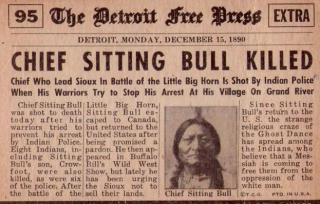 Similarly, Sitting Bull, a leader in the Native American victory over the US Armed Forces in the Battle of Little Bighorn, was murdered in 1890 by an Indian police officer employed by the federal government. At the time the US government feared that Sitting Bull was a leader of the Ghost Dance resistance that was sweeping the prairies as the Indian Affairs departments of the USA and the Dominion of Canada were trying to round up and contain disarmed Indian nations within the confines of Indian reserves and reservations.
Similarly, Sitting Bull, a leader in the Native American victory over the US Armed Forces in the Battle of Little Bighorn, was murdered in 1890 by an Indian police officer employed by the federal government. At the time the US government feared that Sitting Bull was a leader of the Ghost Dance resistance that was sweeping the prairies as the Indian Affairs departments of the USA and the Dominion of Canada were trying to round up and contain disarmed Indian nations within the confines of Indian reserves and reservations.
The Mississippi River and the History of American Apartheid: Tecumseh’s Quest to Check the Expansion of the White Settler State
France’s massive losses in Napoleon’s failed attempt to restore slavery in San Domingue caused him to give up altogether on the Americas as the site of his immense ambitions for an expanding French empire.
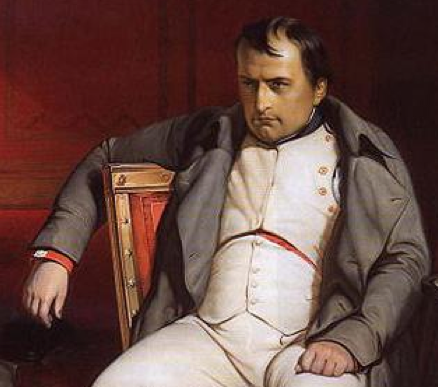
Henceforth Napoleon directed all the imperial energies of the French Armed Forces at conquest throughout Europe and eventually deep into Russia. This shift caused him to agree to sell Louisiana to the United States during the presidency of Thomas Jefferson for $15,000,000, or about four cents an acre.
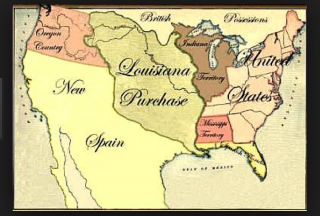 The history of European claims to Louisiana is illustrative of how vast regions of the world peopled by millions of organized human beings were moved around like pawns in the geopolitical chessboard of international affairs. Louisiana was first established in the late 1600s as an administrative district of New France. In 1718 the French settlement of New Orleans was established giving a conveniently located ocean port for French commerce extending to Indigenous peoples throughout the watershed of the Mississippi River.
The history of European claims to Louisiana is illustrative of how vast regions of the world peopled by millions of organized human beings were moved around like pawns in the geopolitical chessboard of international affairs. Louisiana was first established in the late 1600s as an administrative district of New France. In 1718 the French settlement of New Orleans was established giving a conveniently located ocean port for French commerce extending to Indigenous peoples throughout the watershed of the Mississippi River.
France had ceded the eastern portion of the Mississippi Valley to Great Britain in the peace settlement that concluded the Seven Year’s War in 1763. This agreement created the conditions for King George’s Royal Proclamation of 1763 which incorporated East Louisiana into the lands reserved for the Indians as their hunting ground. Secretly France’s King, Louis XV, had transferred his claims to West Louisiana to Charles III, his Bourbon dynasty relative and the King of Spain. The object of the secret transaction in 1762 was to prevent this region of North America from falling under the imperial rule of predominantly Protestant Great Britain.
The Bourbon monarchical claim to West Louisiana covered an enormous area extending all the way from New Orleans to the headwaters of the Missouri River in the Rocky Mountains. In 1800 the French government of Napoleon Bonaparte acquired this European title to what is now much of the heartland of the United States. In the Third Treaty of Ildefonso, Tuscany was exchanged for a “retrocession” handing back to the government of France a portion of its original claim to Louisiana.
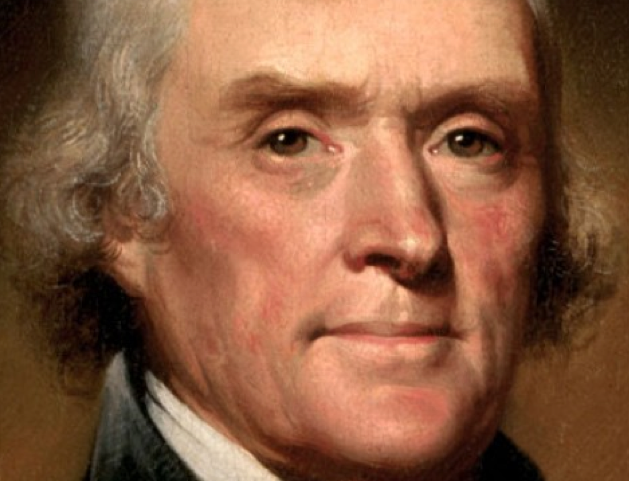
In 1803 US President Thomas Jefferson sent a delegation to France with the intention of purchasing the title to New Orleans from the government of Napoleon Bonaparte. On meeting the US officials Napoleon proposed to sell the entirety of France’s claim to Louisiana. The deal was quickly transacted re-energizing bonds of alliance between France and the United States. The Louisiana Purchase freed Napoleon from his aspiration for an empire in the Americas. Henceforth Napoleon could concentrate all the expansionary energy of his regime on the project of imperial expansion eastward towards Eurasia. Similarly, the transaction was a huge boost for Thomas Jefferson’s agenda of US westward expansion.
Jefferson had outlined his vision of US western expansion in 1780 when he described this goal as a response to British imperialism in Canada. Jefferson wrote, “We shall form to the American union a barrier against the dangerous extension of the British Province of Canada and add to the Empire of liberty an extensive and fertile Country”[iv]
Immediately following the Louisiana Purchase Jefferson developed a plan of using the Mississippi River as a barrier between those Indigenous peoples who refused to assimilate into US society. In the following years, Jefferson’s plan gradually seeped into the thinking of many formulators of American Indian policy. In 1830 US President Andrew Jackson finally acted on the idea, passing through Congress an enactment aimed at uprooting all Indian people in US territory east of the Mississippi and relocating them to an Indian territory west of the Mississippi.
Jackson pushed this very ambitious plan of North American apartheid into operation in the face of a very explicit decision by the US Supreme Court declaring the initiative illegal. “Let the court implement its ruling,” Jackson famously declared. The notorious Trail of Tears was the most famous episode of Indian removal when Cherokee Indians were marched westward to the Indian Territory west of the Mississippi River under the coercive power of the US Armed Forces.
In the early nineteenth century, Tecumseh was very much aware of the dire prospect facing Indigenous peoples in North America. The only viable response, he believed, was to avert the forthcoming disaster through the renewal and expansion of a vast Indian Confederacy of self-defense against the gathering force of US aggression. In the years before the War of 1812, Tecumseh traveled broadly imploring Indian peoples to unite and make a collective stand to prevent the forthcoming cataclysm.
Tecumseh was famous for the powerful impact of his speeches that appealed to his audience’s emotions as well as to their intellect and their instincts for survival. Here is an excerpt of one of his orations in the area of present-day Chicago based on the account of Simon Pikagan. His father Leopold has witnessed some of Tecumseh’s presentations in person. The account incorporates with translations some of the words and phrases in the Anishinabe tongue that is common to many of the Indigenous peoples in the Great Lakes area.
We were many and strong, and they were few and weak. They reached out their hands for wido-kaw-ke-win [help], and we filled them with wie-ans and maw-daw-min [meat and corn]. We lived wa-naw-kiwen [in peace] together; but now they are many and strong, and we are getting few and weak. They waw-nen-dam [have forgotten] the deep debt of mawmo-i-wendam [gratitude] they owe us, and are now scheming to drive us towards ke-so [the setting sun], into desert places far from ke-win and da-na ki aukee [our native land]. Eh [yes], they have come to us with lips smoother than bi-me-da [oil], and words sweeter than amose-poma [honey], but beware of them! The venomous amo [wasp] is in their odaw [heart] and their dealing with us, when we have tamely submitted, has ever been maw-kaw-te and ashki-koman [powder and lead]. Against such mau-tchi aunene [wicked men] our only pagos-seni-ma [hope], our only inin-ijim [safety], is joining all our tribes, and then, we will be able to drive the soulless invaders back. Fail in this and awak-ani-win [slavery] and ne-baw [death] are ours!
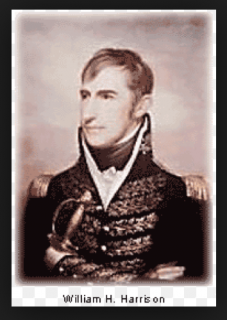 William Henry Harrison, a future US president, was the US official most familiar with Tecumseh and his campaign to unite the First Nations of North America in a great military alliance of self-defense. Harrison was a soldier whose first military experience had been fighting Indians in the frontier battles of the early 1790s. Like Thomas Jefferson, Harrison was a proponent of the imperatives of US western expansion. As the military governor of the US Federal Territory of Indiana, Harrison was in charge of a cynical system of using techniques of bribery, divide-and-conquer tactics, and intimidation in land deals where certain Native individuals were secretly bribed while the public price of land purchases from the Indians was 2 cents per acre.
William Henry Harrison, a future US president, was the US official most familiar with Tecumseh and his campaign to unite the First Nations of North America in a great military alliance of self-defense. Harrison was a soldier whose first military experience had been fighting Indians in the frontier battles of the early 1790s. Like Thomas Jefferson, Harrison was a proponent of the imperatives of US western expansion. As the military governor of the US Federal Territory of Indiana, Harrison was in charge of a cynical system of using techniques of bribery, divide-and-conquer tactics, and intimidation in land deals where certain Native individuals were secretly bribed while the public price of land purchases from the Indians was 2 cents per acre.
On becoming the US president, Thomas Jefferson opened up direct correspondence with the military governor of Indiana. Jefferson advised Harrison to encourage the indebtedness of prominent Indians as a means of dispossession. In language that anticipated the World Bank’s and International Monetary Fund’s promotion of Third World indebtedness to realize various schemes of imposed austerity and privatization, Jefferson wrote,
“We shall push our trading houses, and be glad to see the good and influential individuals among them run in debt because we observe that when these debts get beyond what the individuals can pay, they become willing to lop them off by a cession of lands.” He added, “In this way, our settlements will gradually circumscribe and approach the Indians, and they will in time either incorporate with us as citizens of the United States or remove beyond the Mississippi.”[v]
Following the Louisiana Purchase Jefferson attached the vast Missouri River Basin to Indiana expanding Harrison’s imperial role in the westward expansion of the United States. Before the US government could turn its attentions in a concerted fashion to the trans-Mississippi West, however, it would have to deal with Tecumseh and the British allies of the Indian Confederacy of Canada. Harrison wrote of Tecumseh,
The implicit obedience and respect that the followers of Tecumseh pay to him is really astonishing and more than any other circumstance bespeaks him one of those uncommon geniuses, which spring up occasionally to produce revolutions and overturn the established order of things. If it were not for the victory of the United States, he would perhaps be the founder of an Empire that would rival in the glory that of Mexico or Peru. No difficulties deter him. His activity and industry supply the want of letters. For four years he has been in constant motion. You see him today on the Wabash and in a short time hear of him on the banks of Lake Erie or Michigan, or on the banks of the Mississippi and everywhere he goes he makes an impression favorable for his purposes.[vi]
PART THREE
Israeli-US Relations, 1945-present
The Zionism movement absorbed the imperial ethos of Great Britain on its way to obtaining the commitment from Lord Balfour in 1917 that the British Empire would include a Jewish Homeland in Palestine. Zionism absorbed the expansionary ethos of the German empire in negotiating with the government of Adolf Hitler the Transfer Agreement of 1933. This transaction set out the conditions for the emigration of 60,000 German Jews to Palestine. After the events of World War II, which brought to a terrible culmination the deep hostility of European Christendom to European Jewry in an event widely labeled “the Holocaust,” Zionism turned its attention to the dominant superpower of the times, the United States of America.
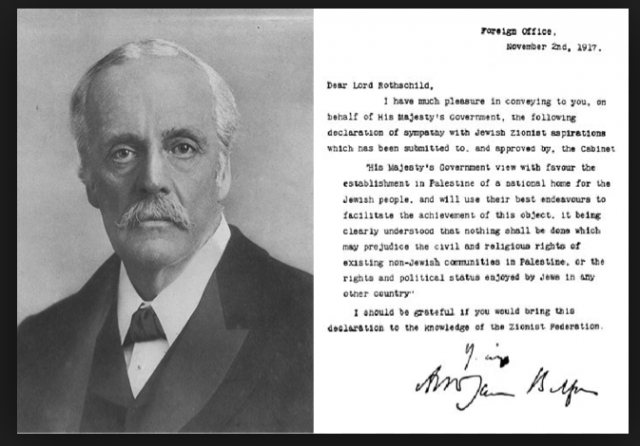
The US government went about filling the vacuum left by the dismantling of the European empires as the imperial powers lost hold of their colonies. In the process, the number of states recognized at the UN jumped from 50 in 1945 to just less than 200 now.
The project of formal decolonization especially in the 1960s was limited and unfinished as attested by the dilemma of the Palestinians and many Indigenous peoples throughout the Americas. The formal empires of Europe were replaced by the informal empire of the United States and, to a lesser degree, of the Soviet Union. In this transition, the role once played by Great Britain’s Colonial Office was replaced by the international interventions of the Pentagon and federal agencies like the CIA.
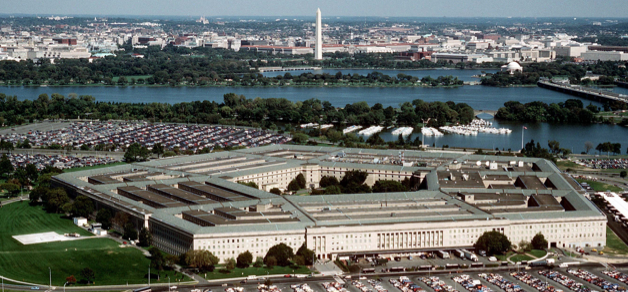
In the post-War genesis of the informal American empire, the Israeli state was initially considered a showcase of the dominant superpower. Just as the British imperial government had pictured the Jewish Homeland as an imperial asset planted near the strategic entry to the Suez Canal in Egypt, so the US government tended to look on its favored Middle Eastern polity as a friendly extension of its own culture in the midst of potentially hostile Arab populations. US support for the Jewish state was broadly viewed as an act of atonement not only for the Holocaust but for the deep complicity of US bankers and corporate bosses in building up the military-industrial complex of Hitlerian Germany.
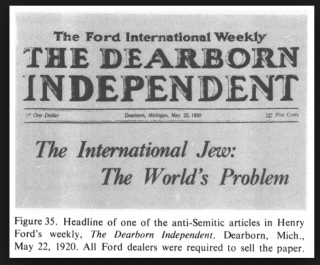 Henry Ford, the founder of the famous automobile company, had been an early backer of Hitler’s political ambitions and a publisher of notorious anti-Jewish diatribes. These texts were translated into German and widely distributed by Hitler’s henchmen throughout Europe. Many of the largest US companies, including Ford, GE, IBM, the Rockefellers’ Standard Oil of New Jersey, Alcoa, and Dupont invested heavily in building up Hitler’s military-industrial complex. Famous American figures like newspaperman William Randolph Hearst and aviator Charles Lindbergh openly promoted Hitler’s White supremacist policies.
Henry Ford, the founder of the famous automobile company, had been an early backer of Hitler’s political ambitions and a publisher of notorious anti-Jewish diatribes. These texts were translated into German and widely distributed by Hitler’s henchmen throughout Europe. Many of the largest US companies, including Ford, GE, IBM, the Rockefellers’ Standard Oil of New Jersey, Alcoa, and Dupont invested heavily in building up Hitler’s military-industrial complex. Famous American figures like newspaperman William Randolph Hearst and aviator Charles Lindbergh openly promoted Hitler’s White supremacist policies.
After the Second World War, the United States took over where Nazi Germany left off as the world’s major bastion of anti-communism. The CIA, for instance, took over Hitler’s covert intelligence network in Eastern Europe. The US corporate and government establishment took in legions of Nazi scientists, experts for instance in rocket propulsion. Many US companies became the beneficiaries of inventions and patents developed in the laboratories of, for instance, the German petro-chemical leviathan, IG Farben. Closely connected to the Rockefeller oil and banking dynasty, IG Farben was the developer of the IG Auschwitz slave labor installation.
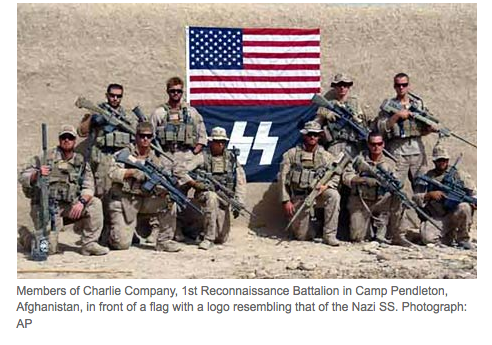 West Germany and Japan were quickly rebuilt and transformed from enemies to friends with major roles in the geopolitics of the globalization of US power. Many of the industrial, financial, and national security elites of the old fascist axis were embraced and set up as key figures in the policy of capitalist “containment” aimed at blocking the spread of Soviet-based and Chinese-based communism.
West Germany and Japan were quickly rebuilt and transformed from enemies to friends with major roles in the geopolitics of the globalization of US power. Many of the industrial, financial, and national security elites of the old fascist axis were embraced and set up as key figures in the policy of capitalist “containment” aimed at blocking the spread of Soviet-based and Chinese-based communism.
Support for the Jewish state in Israel and for a liberal policy of broad acceptance of Jewish-American citizens became a means for the government and people of the United States to distance themselves from the hard realities of their recent past and ongoing role as the Cold War’s dominant power. Those realities extended to the broad business support for the Hitlerian state in its rise and to the US adoption of so many features of fascist anti-communist corporatism once the US government moved away from its wartime alliance with the Soviet regime of Joseph Stalin.
The initial understanding was that the Israeli state would be a base for western-style parliamentarianism and a military base for the high-tech end of US weapons production. A check was briefly put on the extension of the US military-industrial complex when President John F. Kennedy opposed Israel’s acquisition of nuclear weaponry. This obstacle, however, was removed when Kennedy was assassinated in 1963. The partnership between the USA, the NATO countries, and Israel became stronger and stronger as long as the fiction was allowed to prevail that Israel was satisfied to play a role in the informal US empire similar to that of Japan.
Israel was assumed to be the head of a regional sub-empire. The Jewish state was an envoy representing US interests throughout a much broader sphere than its own territorial base. This subordinate position, however, began to be perceived as unacceptable to some of the dominant figures in the Jewish state.
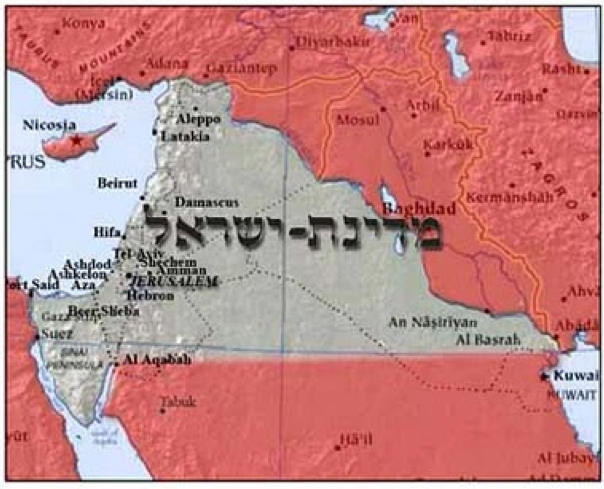
Especially after 9/11, the Israeli government began situating itself at the head of its own nascent global empire subject to the veto power of no other superpower. The success of this strategy depends very much on the willingness of the vast majority of Jews in the so-called Diaspora outside of Israel to support and facilitate this agenda.
It remains to be seen whether or not Jews outside of Israel, but especially in the United States, Canada, and the old imperial powers, will react when called upon to put the interests of the Jewish state ahead of the interests of the countries where they have homes, jobs, citizenship, and personal attachments of countless varieties. Certainly, the Jewish opponents of Zionism have worried since the movement’s inception that the creation of a Jewish state would necessarily raise questions in the future about conflicting allegiances in exactly the kind of situation that is arising when the Israeli government is committing war crimes in the name of international Jewry.
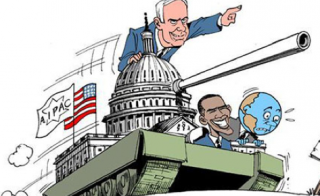 Elite complicity at the top may for a time cover the internal tensions within civil society when Western governments, including major opposition parties, form a common front to support the Israeli state in its ongoing crimes against the humanity of the Palestinian people. Like too many repetitions of false flag terror to scare Western populations into submission, the top-down approach to building the Israeli empire is not indefinitely sustainable. How much longer will it be before beleaguered American taxpayers lose patience altogether with the subordination, especially of the overextended and financially draining US Armed Forces to the priorities of the Israeli state and its Jewish-American lobby?
Elite complicity at the top may for a time cover the internal tensions within civil society when Western governments, including major opposition parties, form a common front to support the Israeli state in its ongoing crimes against the humanity of the Palestinian people. Like too many repetitions of false flag terror to scare Western populations into submission, the top-down approach to building the Israeli empire is not indefinitely sustainable. How much longer will it be before beleaguered American taxpayers lose patience altogether with the subordination, especially of the overextended and financially draining US Armed Forces to the priorities of the Israeli state and its Jewish-American lobby?
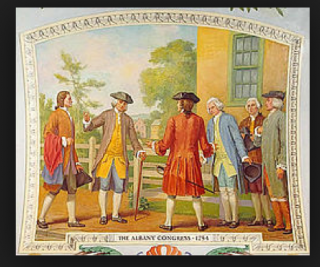 The efforts of Israel to move away from its role as the head of a sub-empire within the informal US empire is reminiscent of the emergence of the United States from the British Empire. At a treaty negotiation in the New York colony in Albany in 1754, Benjamin Franklin attempted to unify and confederate the Thirteen Anglo-American colonies as a single centralized polity. If successful this innovation would have helped secure the principle that the federation Benjamin Franklin envisaged would acquire the status within the British Empire as the head of a regional sub-empire. This plan did not come to fruition immediately but it would prove influential once the founders of the United States turned against the British Empire.
The efforts of Israel to move away from its role as the head of a sub-empire within the informal US empire is reminiscent of the emergence of the United States from the British Empire. At a treaty negotiation in the New York colony in Albany in 1754, Benjamin Franklin attempted to unify and confederate the Thirteen Anglo-American colonies as a single centralized polity. If successful this innovation would have helped secure the principle that the federation Benjamin Franklin envisaged would acquire the status within the British Empire as the head of a regional sub-empire. This plan did not come to fruition immediately but it would prove influential once the founders of the United States turned against the British Empire.
Might would-be architects of the Israeli empire attempt a similar assertion of imperial independence in the quest to persist along a course towards the territorial realization of Greater Israel? Will the Palestinians be afforded relief from the burden of expulsion and occupation to enter the community of nations as sovereign people equipped with a sufficient land base together with the institutions of genuine self-determination? Will the inspirational spirit of Tecumseh and Toussaint L’Overture open the way to a more inclusive vision of “The West” than the impoverished conception of Benjamin Netanya and his loyal Canadian disciple, Stephen Harper?
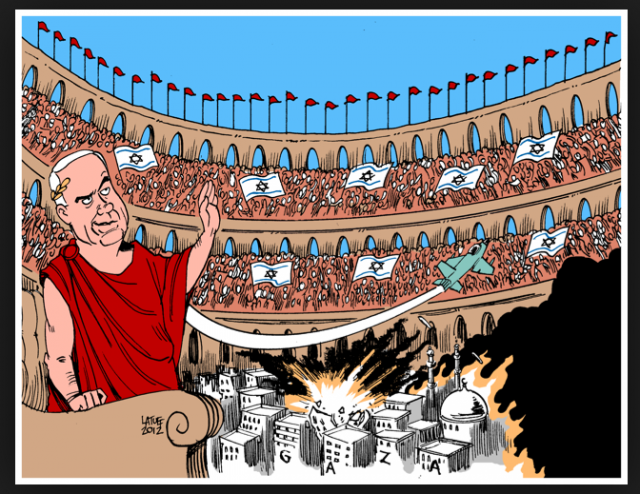
SOURCES
[i] The Speech of the Commissioners of the United States to the Deputies of the Confederate Indian Nations Assembled on the Rapids of the Miamis River, July 31, 1793, in E.A. Cruikshank, ed, The Correspondence of Lieutenant Governor John Graves Simcoe (Toronto: The Ontario Historical Society, 1923), Vol. 1, pp. 405-409
[ii] http://isreview.org/issue/63/black-jacobins
[iii] Quoted in Phillip Foner, The Life and Writings of Frederick Douglass, Volume 4 (New York: International Publishers, 1975), p. 484.
[iv] http://wiki.monticello.org/mediawiki/index.php/Empire_of_liberty
[v] http://www.digitalhistory.uh.edu/active_learning/explorations/indian_removal/jefferson_to_harrison.cfm
[vi] Cited in Herbert Charles Walter Goltz, “Tecumseh, the Prophet and the Rise of the Northwest Indian Confederacy,” Ph.D. thesis, University of Western Ontario, 1973, pp. 255-56
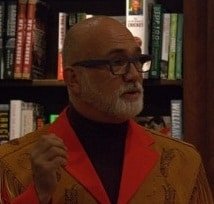
Anthony Hall is a Professor of Globalization Studies at the University of Lethbridge in Alberta Canada where he has taught for 25 years. Along with Kevin Barrett, Tony is co-host of False Flag Weekly News at No Lies Radio Network. Prof. Hall is also Editor In Chief of the American Herald Tribune. His recent books include The American Empire and the Fourth World as well as Earth into Property: Colonization, Decolonization and Capitalism. Both are peered reviewed academic texts published by McGill-Queen’s University Press. Prof. Hall is a contributor to both books edited by Dr. Barrett on the two false flag shootings in Paris in 2015.
Part II was selected by The Independent in the UK as one of the best books of 2010. The journal of the American Library Association called Earth into Property “a scholarly tour de force.”
One of the book’s features is to set 9/11 and the 9/11 Wars in the context of global history since 1492.
ATTENTION READERS
We See The World From All Sides and Want YOU To Be Fully InformedIn fact, intentional disinformation is a disgraceful scourge in media today. So to assuage any possible errant incorrect information posted herein, we strongly encourage you to seek corroboration from other non-VT sources before forming an educated opinion.
About VT - Policies & Disclosures - Comment Policy




